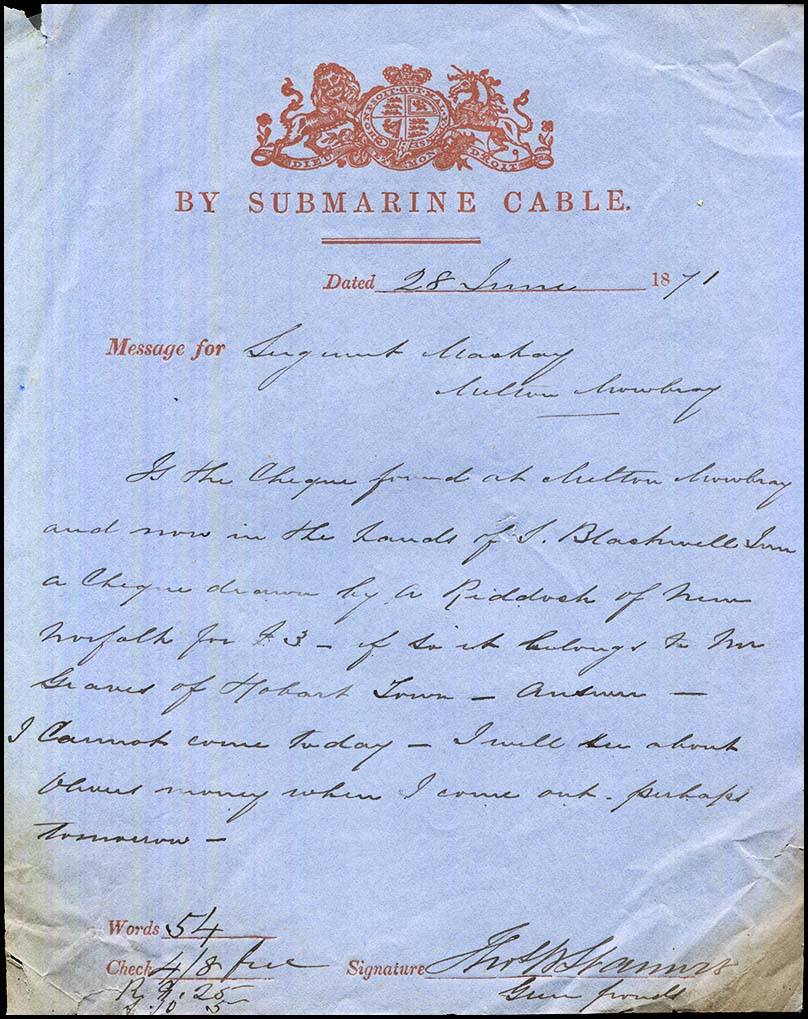Instructional marking - FREE.
- Australia 1901-1988
- New South Wales
- Overview of NSW
- Telegraph lines
- Telegraph Offices
- Date stamps
- Forms
- Envelopes
- Instructional annotation
- Collect
- Delayed
- Free
- Immediate Urgent
- Reply paid
- Rates
- Stamps
- 1871 Telegraph stamps
- 1885 proposal
- 1893 proposal
- Queensland
- South Australia
- Tasmania
- Victoria
- Western Australia
- International
- Special aspects
As shown on another page, it was possible for the "normal people" to request that the receiver of a telegram pay for the cost of transmission. The COLLECT instructional marking is discussed on another page.
Government agencies were not explicitly charged for sending telegrams on the basis that it was the Government who was ultimately paying anyway. So no charging saved time and effort in accounting procedures. It also meant that government officials could send messages as frequently as they wished and those messages could be as long as they wished. The length of many messages and their frequency soon led to the Telegraph Offices in many locations becoming overloaded.
The indication of the Government-exempt telegram was the inclusion of the word FREE as an instructional marking after the cost had been determined. Early colonial examples of this marking are provided below.
 |
Delivery form (TC-DC-1) for a message sent from Green Ponds to Melton Mowbray 28 June 1871 (the CABLE form was used in an effort about that time to use up the stock of cable forms. The form contains a long 54 word message with a calculated cost of 4/8 the rate calculation was 1/- for the first 10 words and 1d for each additional word. Hence 44 additional words @ 1d is 3/8 giving total cost of 4/8 as indicated.. As the telegram was sent on official business it has the FREE annotation after the cost. |
Other examples shown elsewhere in this site are:
- TC-TO-1 on a telegram from Green Ponds to Oatlands on 17 January 1871.
- TC-DC-1 on a telegram from Green Ponds to Brighton on 19 June 1871.